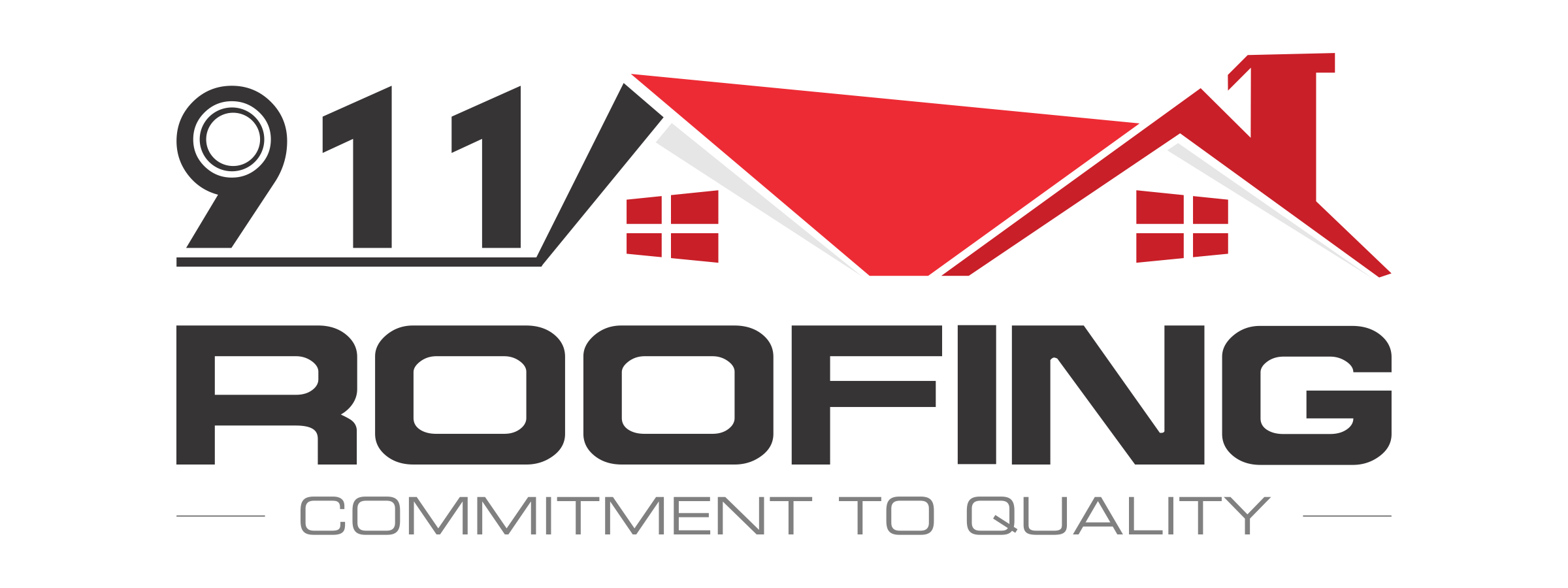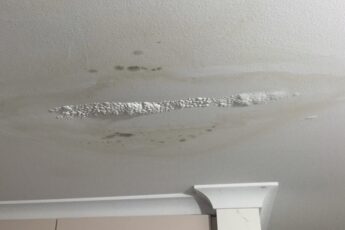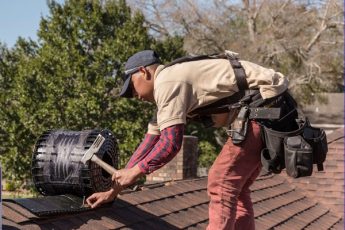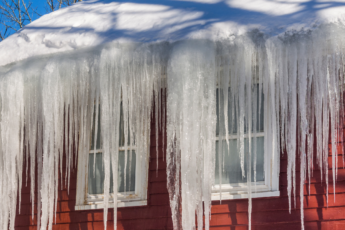Expert tips from 911 Roofing team to protect your roof for snow, ice and blizzard
5 Tips to Overcome Winter Weather Roof Challenges
Get ready to weather the storm with these 5 easy steps to prepare your roof for winter. As the icy winds and snowflakes start to make their appearance, it’s important to protect your investment by ensuring your roof is in top condition.
In this article, we’ll guide you through simple yet essential measures you can take to safeguard your roof from the harsh winter elements. From inspecting your roof for damage to cleaning out gutters and downspouts, our expert tips will help you avoid costly repairs down the line.
With years of experience in the roofing industry, 911 Roofing understand the importance of maintaining your roof’s integrity, especially during the winter months. Our step-by-step guidelines will give you the confidence and knowledge to tackle these preparations like a pro.
Don’t let winter catch you off guard. By following these 5 easy steps, you’ll be well-equipped to keep your roof in great shape and protect your home from leaks and other winter-related issues. So, get ready to take action and ensure a secure and cozy winter season for you and your loved ones.
The importance of preparing your roof for winter
Winter can be harsh on your home, and your roof is the first line of defense against the elements. Freezing temperatures, heavy snowfall, and strong winds can cause significant damage if your roof is not adequately prepared. By taking the time to prepare your roof for winter, you can avoid costly repairs and ensure the safety and comfort of your home.
Step 1: Inspect Your Roof for Any Damage or Signs of Wear and Tear
Before winter arrives, it’s crucial to inspect your roof for any existing damage or signs of wear and tear. Start by visually inspecting your roof from the ground, looking for missing or damaged shingles, cracked flashing, or any other visible issues. If you notice any problems, it’s advisable to call a professional roofer to assess the damage and make the necessary repairs.
Next, take a closer look at your attic. Look for any signs of water damage, such as stains or mold growth. Inspect the insulation and ensure it is in good condition and properly installed. Adequate insulation will help prevent heat loss, reduce energy consumption, and prevent ice dams from forming on your roof.
Lastly, check the condition of your chimney and vents. Make sure they are clear of debris and properly sealed to prevent water leaks. Any cracks or gaps should be repaired promptly to maintain the integrity of your roof.
Step 2: Clean Your Gutters and Downspouts to Prevent Ice Dams
Clogged gutters and downspouts can lead to ice dams, which can cause significant damage to your roof and home. Before winter arrives, take the time to clean out your gutters and downspouts to ensure proper water drainage.
Start by removing any leaves, twigs, and other debris from your gutters. Use a garden trowel or a gloved hand to scoop out the debris and dispose of it properly. Once the gutters are clear, use a hose to flush out any remaining dirt or small particles.
Next, check that your downspouts are clear and free-flowing. Use a plumber’s snake or a high-pressure hose attachment to remove any blockages. Make sure the downspouts are directing water away from your home’s foundation and that the ground below is properly graded to prevent water pooling.
Step 3: Trim Overhanging Branches and Remove Debris from Your Roof
Overhanging branches can pose a significant risk to your roof during winter storms. Heavy snowfall or strong winds can cause these branches to break and damage your roof. To prevent this, take the time to trim any overhanging branches before winter arrives.
If you’re not comfortable doing this yourself, consider hiring a professional tree service to handle the job safely. They have the necessary equipment and expertise to trim trees without causing any damage to your roof or property.
In addition to trimming branches, it’s essential to remove any debris from your roof. Leaves, twigs, and other debris can collect in the valleys and corners of your roof, trapping moisture and causing damage over time. Use a soft-bristle brush or a leaf blower to gently remove the debris, being careful not to damage the shingles.
Step 4: Check and Repair Any Leaks or Weak Spots in Your Roof
Winter weather can exacerbate any existing leaks or weak spots in your roof. Therefore, it’s crucial to identify and repair these issues before the snow starts falling.
Start by checking your attic for any signs of water damage, such as stains or dampness. Follow the source of the water to find the exact location of the leak. Once you’ve identified the problem area, you can either repair it yourself or hire a professional roofer to fix the issue.
For minor leaks, you can use roofing cement or a sealant to patch up the damaged area. However, for more significant issues, it’s best to consult a professional to ensure proper repairs are made.
Step 5: Add Insulation and Ventilation to Improve Energy Efficiency
Proper insulation and ventilation are crucial for maintaining a comfortable and energy-efficient home during winter. Inadequate insulation can lead to heat loss, increased energy consumption, and ice dams on your roof.
Start by inspecting the insulation in your attic. Ensure it is in good condition and properly installed. If needed, add additional insulation to achieve the recommended R-value for your climate zone. This will help keep your home warm and reduce heating costs.
Next, assess the ventilation in your attic. Proper ventilation allows air to circulate and prevents moisture buildup, which can lead to mold growth and damage to your roof. Ensure that your attic vents are clear of debris and that there is proper airflow throughout the space.
By improving insulation and ventilation, you can create a more energy-efficient home while protecting your roof from winter-related issues.
—
Tip 1: Inspect your roof for any damage or signs of wear and tear
In addition to the five steps outlined above, here are a few additional tips to help you maintain your roof during the winter months:
1. Remove snow from your roof using a roof rake or a long-handled broom. This will prevent the weight of the snow from causing structural damage or leaks.
2. Avoid using salt or ice melt products on your roof, as they can damage the shingles and gutters. Instead, use a roof-friendly de-icing cable or consult a professional for safe alternatives.
3. Keep an eye out for icicles hanging from your roof. While they may look beautiful, they can be a sign of ice dams forming. If you notice icicles, take steps to prevent ice dams by improving insulation and ventilation.
4. If you live in an area with frequent snowfall, consider installing snow guards on your roof. Snow guards help prevent large chunks of snow from sliding off the roof and causing damage to people or property below.
—
Tip 2: Clean your gutters and downspouts to prevent ice dams
While some roof preparations can be done by homeowners, hiring a professional roofer offers several benefits. A professional has the knowledge, experience, and specialized tools necessary to identify and address potential issues before they become major problems.
Additionally, professional roofers can provide a thorough inspection of your roof, identifying any hidden damage or weaknesses that may not be apparent to the untrained eye. They can also offer expert advice on the best course of action to protect your roof and ensure its longevity.
By investing in professional roof preparation, you can have peace of mind knowing that your roof is in the hands of experts who will take the necessary measures to safeguard your home from winter-related damage.
—
Tip 3: Trim overhanging branches and remove debris from your roof
Winter weather can exacerbate existing roof problems, so it’s important to be aware of common issues that may arise during this season.
1. Ice Dams: Ice dams form when snow melts on the warmer parts of the roof and refreezes at the colder eaves. This can cause water to back up under the shingles, leading to leaks and water damage.
2. Condensation: Poor ventilation and insulation can cause condensation to form in the attic. This moisture can lead to mold growth, rotting wood, and damage to the roof structure.
3. Shingle Damage: Freezing temperatures and heavy snow can cause shingles to crack, curl, or become dislodged. Damaged shingles can lead to leaks and further damage to the roof and interior of your home.
4. Gutters and Downspouts: Clogged gutters and downspouts can lead to water backup, which can damage the roof and cause leaks. Additionally, the weight of ice and snow in the gutters can pull them away from the roofline.
5. Flashing Issues: Cold weather can cause the flashing around chimneys, vents, and skylights to become brittle and crack. Damaged flashing can allow water to seep into the roof, leading to leaks and water damage.
By being aware of these common roof problems, you can take proactive measures to prevent or address them before they cause significant damage to your home.
—
Tip 4: Check and repair any leaks or weak spots in your roof
Preparing your roof for winter is an essential part of maintaining your home’s integrity and protecting your investment. By following the 5 easy steps outlined in this article, you can ensure that your roof is ready to withstand the harsh winter elements.
From inspecting your roof for damage to cleaning out gutters and downspouts, each step plays a crucial role in preventing costly repairs and maintaining a safe and comfortable home. Additionally, by addressing common winter roof problems and investing in professional roof preparation, you can enjoy peace of mind knowing that your home is well-protected.
Don’t wait until winter is in full swing to start preparing your roof. Take action now and follow these expert tips to secure a cozy and worry-free winter season for you and your loved ones. Protect your investment and enjoy the beauty of winter without the stress of roof-related issues. Stay warm, stay safe, and embrace the season with confidence.
Tip 5: Add insulation and ventilation to improve energy efficiency
Before winter arrives, it’s crucial to inspect your roof for any signs of damage or wear. Start by examining the shingles for cracks, missing pieces, or curling edges. These issues can lead to leaks and further damage during winter storms. Use binoculars if necessary to get a closer look at the entire surface of your roof. If you notice any damage, it’s important to address it promptly.
In addition to inspecting the shingles, pay attention to the flashing around chimneys, vents, and skylights. Damaged or deteriorated flashing can allow water to seep into your home, causing extensive damage. Replace any missing or damaged flashing to ensure a watertight seal.
Cleaning your roof is also essential before winter sets in. Remove any debris, such as leaves, branches, or moss, that has accumulated on the surface. This debris can trap moisture and accelerate the growth of mold or mildew. Use a soft-bristle brush or broom to gently sweep away the debris, being careful not to damage the shingles.
Once you’ve completed the inspection and cleaning, you’ll have a solid foundation for the next steps in preparing your roof for winter.
—
Additional tips for winter roof maintenance
Clogged gutters and downspouts can cause a host of problems during winter. When debris accumulates in gutters, it prevents proper water drainage, leading to overflowing gutters and potential water damage to your roof and foundation.
Start by removing any leaves, twigs, and other debris from the gutters using a scoop or a gloved hand. Make sure to dispose of the debris properly and not leave it on your roof or in the gutters.
Next, use a hose to flush out the gutters and downspouts, ensuring that water flows freely. This step is crucial in identifying any blockages or leaks in the system. If you notice any leaks or areas where water isn’t flowing properly, repair or replace the affected parts to prevent water damage during winter storms.
Regular gutter maintenance is essential throughout the year, but it becomes even more important during winter when heavy rain and snowfall are common. By keeping your gutters and downspouts clean and in good condition, you’ll prevent water from backing up and causing potential damage to your roof and home.
—
The benefits of hiring a professional for roof preparation
During winter storms, strong winds can cause branches to break and fall onto your roof, leading to serious damage. To prevent this, it’s important to trim any trees or branches that are in close proximity to your roof.
Start by inspecting the trees around your property and identify any branches that overhang your roof or are too close for comfort. Trim these branches, ensuring that they are at least six feet away from your roof. This distance will help minimize the risk of branches falling onto your roof during storms.
If you’re unsure about how to safely trim branches, it’s best to hire a professional tree service. They have the necessary equipment and expertise to handle the job safely and efficiently. Remember, safety should always be a priority when working with trees and heights.
By proactively trimming trees and branches, you’ll reduce the risk of roof damage and potential injury during winter storms. It’s a simple step that can make a big difference in protecting your investment.
—
Common roof problems to watch out for during winter
Even a small leak can quickly turn into a major problem during winter. That’s why it’s crucial to check your roof for any signs of leaks or weak spots and repair them before the cold weather arrives.
Start by inspecting your attic for any signs of water staining or dampness. These can indicate a leak in your roof. Look for any sunlight coming through cracks or gaps in the roof as well. This can be a sign of weak spots that need to be addressed.
If you find any leaks or weak spots, it’s important to fix them promptly. Depending on the severity of the issue, you may be able to patch it yourself or you may need to hire a professional roofer. Remember, addressing these problems early on can save you from costly repairs and further damage in the future.
—
Conclusion: Protecting your investment and ensuring a safe winter season for your home
Proper insulation and ventilation are key to keeping your home warm and energy-efficient during winter. Without adequate insulation, heat can escape through your roof, resulting in higher energy bills and a less comfortable living environment.
Start by checking the insulation in your attic. If it’s insufficient or damaged, consider adding or replacing it. This will help prevent heat loss and keep your home warm during the colder months. Additionally, adding a layer of insulation on your attic floor can further improve energy efficiency.
Proper ventilation is also essential to prevent moisture buildup and ice dam formation on your roof. Make sure vents are clear of obstructions and functioning properly. If necessary, install additional vents or consider a ridge vent system to improve air circulation.
By improving insulation and ventilation, you’ll not only save on energy costs but also protect your roof from potential damage caused by ice dams and excess moisture.
—
We hope that you will be able to have a safe and secure winter by following our advice. In case you still need any professional help of need to repair your roof, please feel free to contact the 911 Roofing team for your help in Detroit Area.







